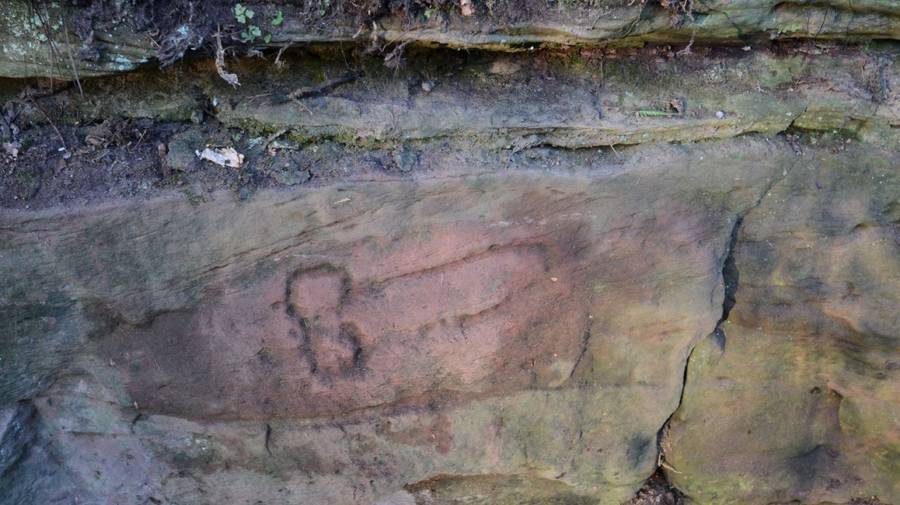The Biggest Archaeological Discoveries Of 2019: 1,800-Year-Old Roman Penis Carving Found On Hadrian’s Wall

Newcastle UniversityThe phallus was a symbol of good luck to Ancient Romans.
In 2019, archaeologists descended into a 30-foot quarry via rope in order to scan the historic Hadrian’s Wall fortification in northeast England with lasers. They created detailed, three-dimensional digital models of the carvings therein — including one 1,800-year-old penis carving that was pretty clear even without the laser-generated models.
Researchers recorded inscriptions never seen before, including caricatures and phrases. The phallus, however, was perhaps most exciting of all. The penis, itself, was a common symbol of good luck in the time of ancient Rome.
Known regionally as “The Written Rock of Gelt,” the 30-foot sandstone quarry in Cumbria also contained other stunning remains from the Roman era. One of the carvings dates back to 207 A.D., when the wall underwent thorough repairs, and clarifies that the work was done under the consulate of Aper and Maximus.
“The Written Rock of Gelt” was initially thought to contain nine Roman carvings, though only six are currently legible. More are expected to be found, according to experts.
“These inscriptions at Gelt Forest are probably the most important on the Hadrian’s Wall frontier,” said Mike Collins, Inspector of Ancient Monuments for Hadrian’s Wall at Historic England.
“They provide insight into the organization of the vast construction project that Hadrian’s Wall was, as well as some very human and personal touches, such as the caricatures of their commanding officer inscribed by one group of soldiers.”
Most exciting is that the public will finally be able to look at these carvings themselves as the researchers plan to display the digital scans to the public when their work is complete.





